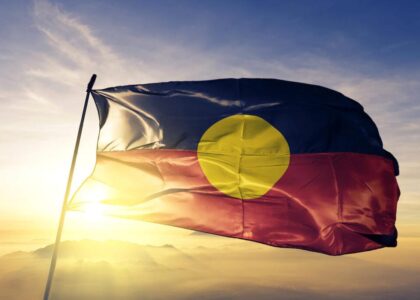How To Address The Indigenous Procurement Policy In Government Tenders

Have you ever encountered the section on the Indigenous Procurement Policy when responding to a federal government tender, and wondered how to address it in your response?
NOTE: This is an updated version of a post originally published in 2017.The Australian Government’s Indigenous Procurement Policy was established in July 2015 to create opportunities for Indigenous businesses to grow and attract private investment. It was updated and strengthened five years later to build on government progress in meeting initial Indigenous procurement targets. The policy is now administered by the National Indigenous Australians Agency, established in May 2019.
The primary purpose of the Indigenous Procurement Policy is to stimulate entrepreneurship, business, and economic development, providing Indigenous Australians with more opportunities to participate in the economy.
As an important social procurement driver, the Indigenous Procurement Policy has influenced the federal procurement rules and become embedded in federal government procurement approaches.
If a federal department is planning a procurement, then under most conditions an Indigenous enterprise must be given the opportunity to supply the services and products being sought before the government can seek any approach to a wider market.
In addition, the government is required to include mandatory minimum requirements (MMR) for Indigenous participation for any high-value contracts ($7.5 million or more) in specific industry categories. This will include minimum targets against objectives such as Indigenous employment and spend with Indigenous businesses.
In cases when a government department can approach a wider market, seeks an exemption, or is not mandated to apply the Indigenous Procurement Policy, there is still strong encouragement to apply the principles of the policy to the tender. We have seen many federal tenders include requirements for how a supplier can support Indigenous participation (whether in employment or in supporting Indigenous businesses), even when application of the policy is not mandatory.
By being aware of the Indigenous Procurement Policy, and embracing its intent, businesses have the opportunity to build relationships with Indigenous suppliers and contractors – to both differentiate themselves from competitors and support important social and economic development.
RFTs and the Indigenous Procurement Policy
Even when government buyers abide by the commitments established by the Indigenous Procurement Policy, the degree to which different departments and agencies require suppliers to comply with these commitments can vary.
Here are two examples of how Indigenous participation can be requested in a tender, based on the value and complexity of that tender:
Example question A
- The tenderer should provide an overview of the Indigenous programs or strategies it has in place or is developing. This may take the form of:
- a copy of any existing reconciliation action or diversity plan, and an overview of this/these plan(s)
- details of any businesses operated by organisations that are 50% or more Indigenous owned that the Tenderer currently purchases products and/or services from
- current numbers of Indigenous Australians employed by the Tenderer; and/or
- whether the Tenderer is more than 50% Indigenous owned; and/or
- details of other Indigenous programs or strategies the Tenderer will initiate over the term of any resultant Head Agreement.
Example question B
- Briefly detail your organisation’s proposed approach to using Indigenous enterprises and employment of Indigenous Australians in the delivery of the Services.
Moreover, when you review the evaluation criteria and the weighting placed on these policy questions, amongst all the questions associated with meeting the specifications of the service, they also vary greatly in emphasis and contribution to the overall score.
As an example, when tendering for procurements to which mandatory minimum requirement targets apply, tenderers should:
- outline how the MMR targets will be achieved within an Indigenous Participation Plan (see below)
- indicate if they have been subject to MMR targets previously; and
- declare their organisations current levels of Indigenous employment and supply use.
A sample response is provided as an annex to this blog.
If you have or are in the process of developing a Reconciliation Action Plan (or RAP), then your organisation is ahead of the game when it comes to responding to any Indigenous policy question in a tender. A RAP details an organisation’s commitment towards taking meaningful action to advance reconciliation for Indigenous peoples and includes minimum required actions and deliverables.
RAPs need to be endorsed and accredited by Reconciliation Australia. They have great information on determining whether it is suitable for your organisation, and the process for developing and implementing a RAP.
What about an Indigenous Participation Plan?
As noted above, tenders that are greater than $7.5M attract MMR as part of the Indigenous Procurement Policy.
If the tender you are applying for has MMR, it will also likely refer to an Indigenous Participation Plan. This is simply a plan that documents how you achieve (if not exceed!) the minimum target requirements that government specifies. There will also likely be contract clauses that relate to the plan, ensuring you comply with your commitments.
The MMR are related to minimum Indigenous employment or supply use:
- contract-based level (in other words, project-based): 4% Indigenous employment or use of Indigenous businesses; OR
- organisation-based level: 3% Indigenous employment or use of Indigenous businesses.
This could also be a combination of both, depending on the government agency and your discussions with them. Your Indigenous Participation Plan must demonstrate how you are going to achieve the MMR targets, and also include your organisation’s current level of Indigenous employment and/or use of Indigenous businesses.
The government will also consider your past performance against meeting MMR targets, so it’s very important that your response clearly demonstrates what you will do (not just what you say you’ll do). If you can demonstrate past experiences where you have actively worked with (or looked for) an Indigenous business and/or tried to employ Indigenous people as part of your business, this will also help bolster your response.
Even if you don’t believe that you will be tendering for goods and services that fall under the MMR, starting some small initiatives now within your organisation could help position you in the future to target those bigger contracts, or put you on the front foot if government decides to expand these MMR targets to a broader reach.
Ignore policy at your peril
Government policy – whether it be at the local, state or federal level – matters. Especially when it comes to policy that is included within a procurement framework or process.
When it is all said and done, and government is about to approve the awarding of a contract to a particular supplier, the one question they will focus on is ‘how will this contract deliver on the policy targets and commitments for this year?’.
You increase your chances of success if you treat policy questions with respect and provide the answer.
Policy has two impacts on procurement.
First, policies that directly relate to government procurements – such as policies on Indigenous development, local industry, and social and community objectives – will attract tender requirements seeking how a supplier can contribute to these policy initiatives.
Secondly, when faced with two responses with similar value for money assessments, the supplier that demonstrates stronger policy compliance is often the winning bid.
All federal government departments have Indigenous participation targets that they have to meet annually. If you are the supplier that has a strong response to how you can contribute to these targets, it will give a tender assessor a more favourable response to your submission – in that you understand government needs and are willing to support their social (and economic) objectives. This may also give you the edge when it comes to scoring well in your overall submission!
Annex: A sample response to example question A (above)
XX is not a registered Indigenous Enterprise as we do not have more than 50% Indigenous ownership. We do not at this time have Indigenous employees working at XX or Indigenous enterprises subcontracting to XX.
However, XX has a strong culture around diversity and multiculturalism. We currently employ XX practitioners from a range of nationalities and ethnic backgrounds. We also have a strong culture and practice around equal opportunity and non-discrimination. The next step in our cultural evolution at XX is to extend this track-record to recognise the contribution to business from the Indigenous community of Victoria and Australia.
XX is currently devising plans to include the government’s Indigenous Procurement Policy within its supply chain and subcontracting policies and practices. These plans have so far identified the following engagement policies
- Supply Chain – Preference is given in the context of strong value-for-money to suppliers that are 50% or more Indigenous owned
- Subcontractors – Preference is given in the context of strong value-for-money to subcontractors who are 50% or more Indigenous owned. Subcontractors must be Indigenous Enterprises and registered with Supply Nation (supplynation.org.au) or Kinaway (kinaway.com.au)
In addition, our plans are addressing the supply of the required XX skills and knowledge from graduating Indigenous software engineers. XX is addressing this issue and the potential for employment at XX, with Victorian and nationally based tertiary institutions.
With respect to other Indigenous programs or strategies XX will initiate over the term of the resultant Head Agreement, we are planning to include Indigenous perspectives within the design and execution of our services. XX supports an increase of opportunities for the employment of Indigenous Australians, along with the continued growth of supplier diversity in Australia.
We also recognise the value of using the expertise of Indigenous Australians to support our delivery, particularly in categories such as Service Design, Interactive Design, Inclusive Design and Accessibility where digital strategies must speak to all Australians.
In including Indigenous Australians in our processes, we will:
- Involve Indigenous Australians in analysing existing user experiences, use their expertise through research activities and involve them in user testing sessions
- Ensure that Indigenous cultural needs are considered when assessing and testing inclusive designs
Invite Indigenous enterprises to quote on any relevant work that is not within our scope or that complements our service offering, sourcing these organisations through organisations such as Supply Nation or Kinaway.
Jade Leong
Latest Insights –
-

Do You Know What A Winning Tender Response Looks Like?
How do you know what a winning tender response looks like if you’ve never seen…
Read more -

Spotlight On The Victorian Aboriginal Procurement Target
Six years down the track, we take a look at progress towards the Victorian Aboriginal…
Read more -

Company Policies: Why Your Organisation Needs Them
Company policies guide decision-making and are an important governance tool. Importantly for government suppliers, there…
Read more